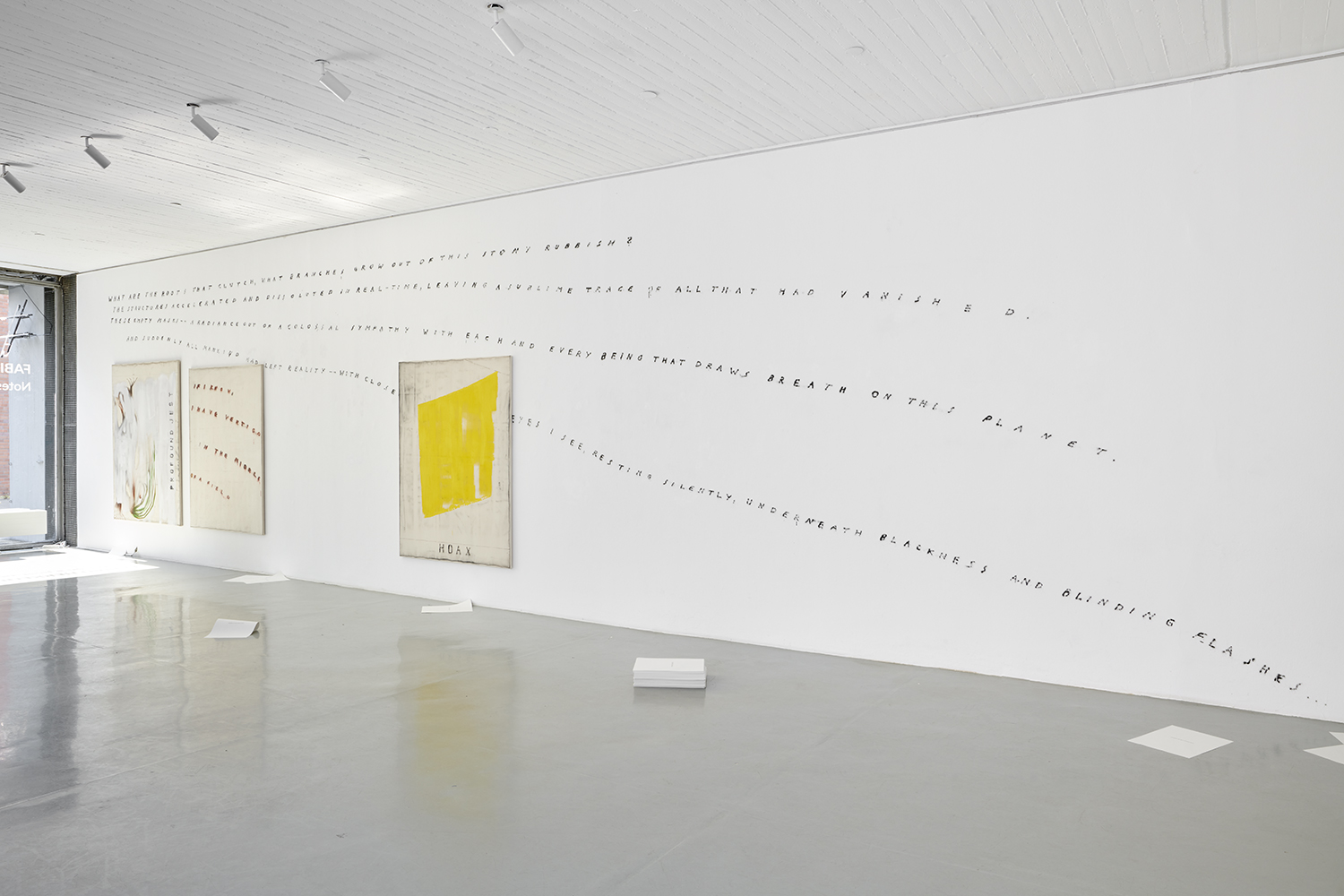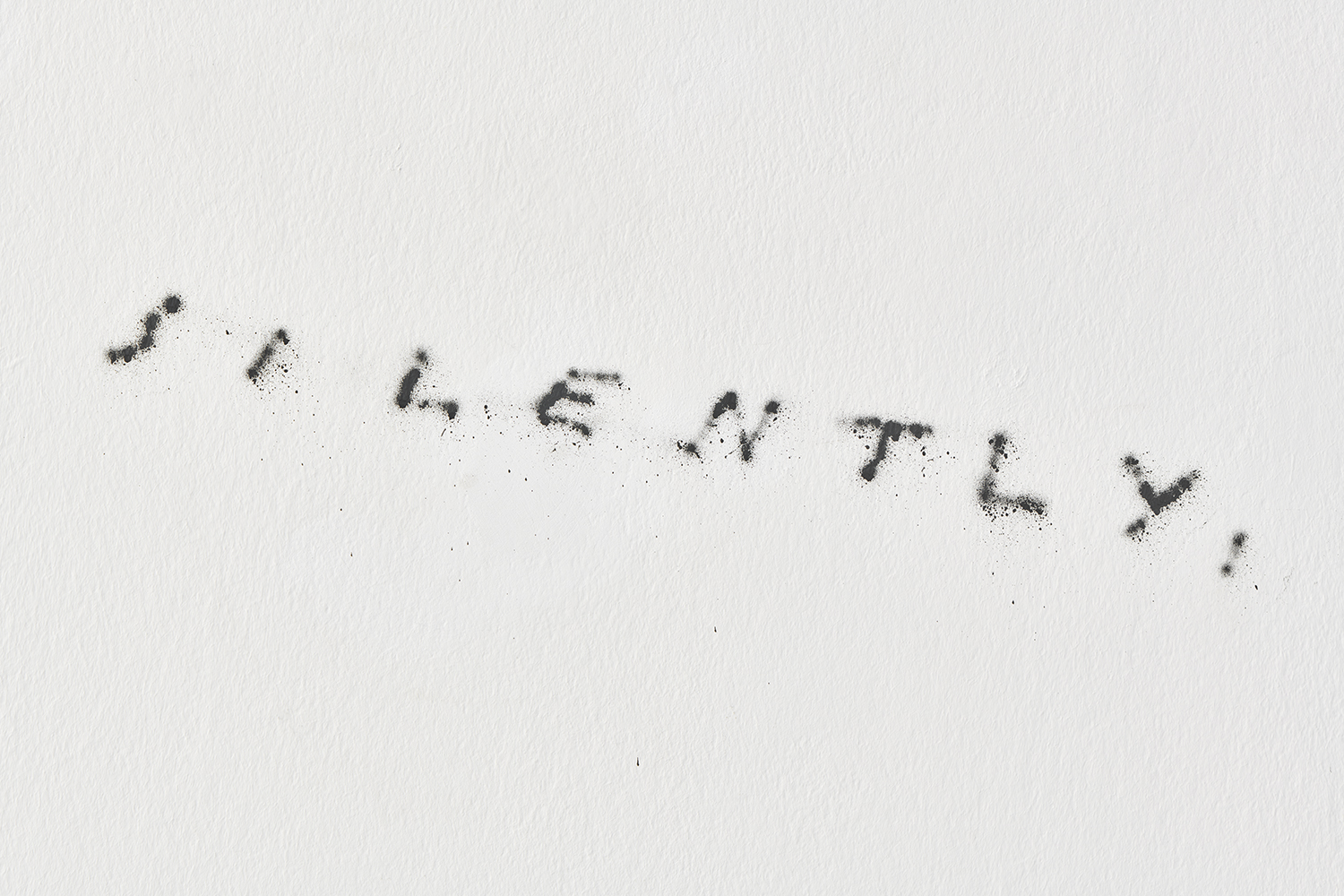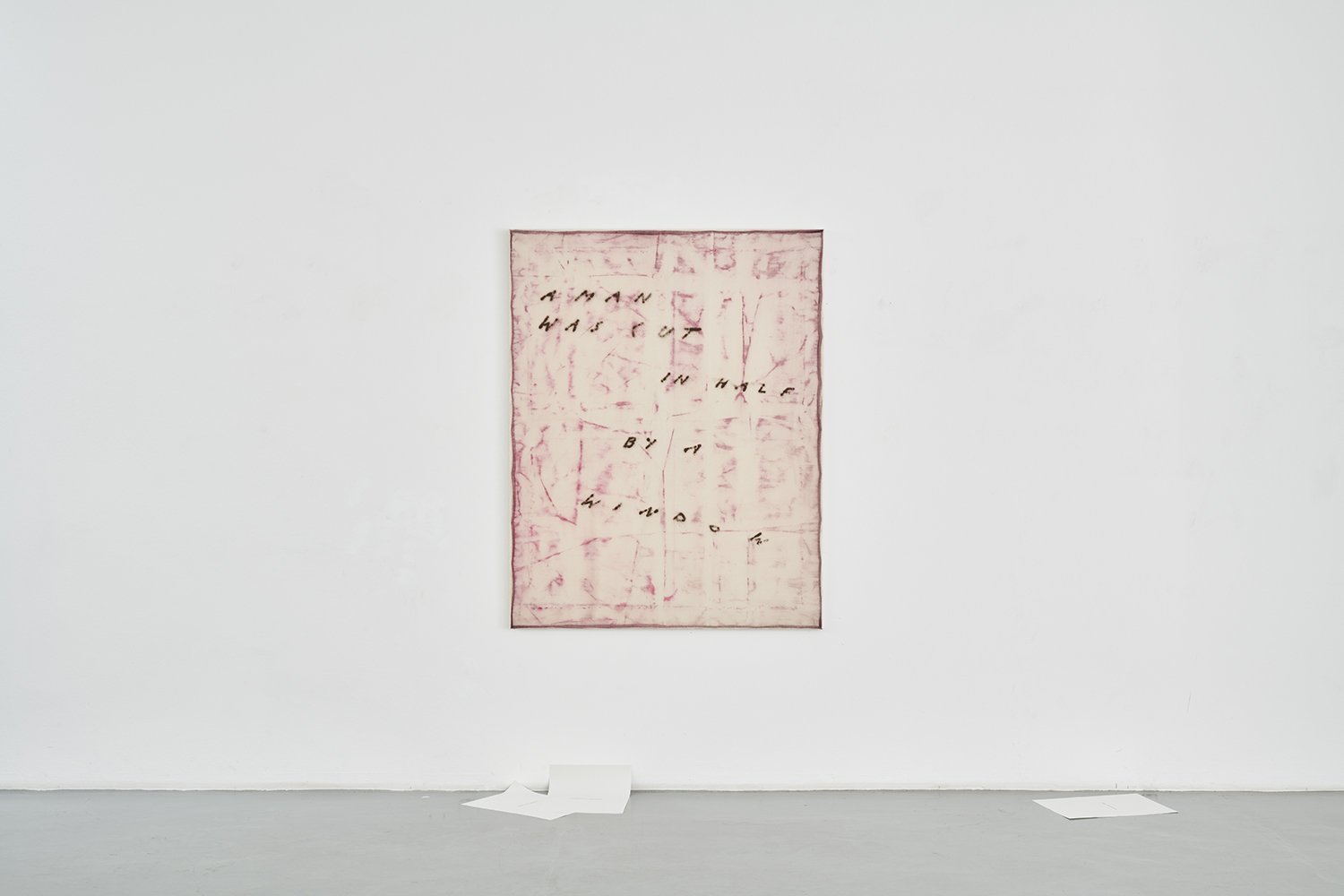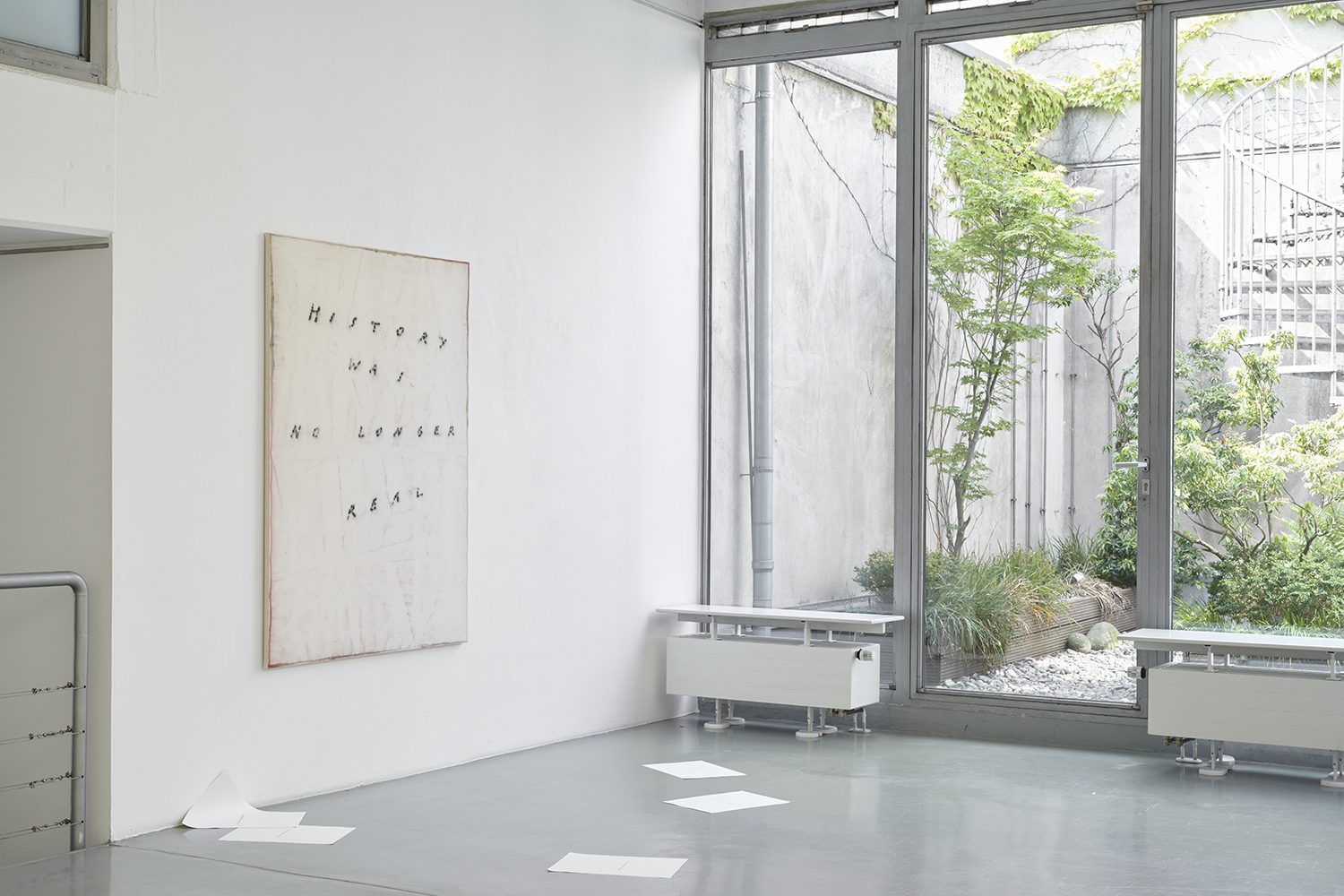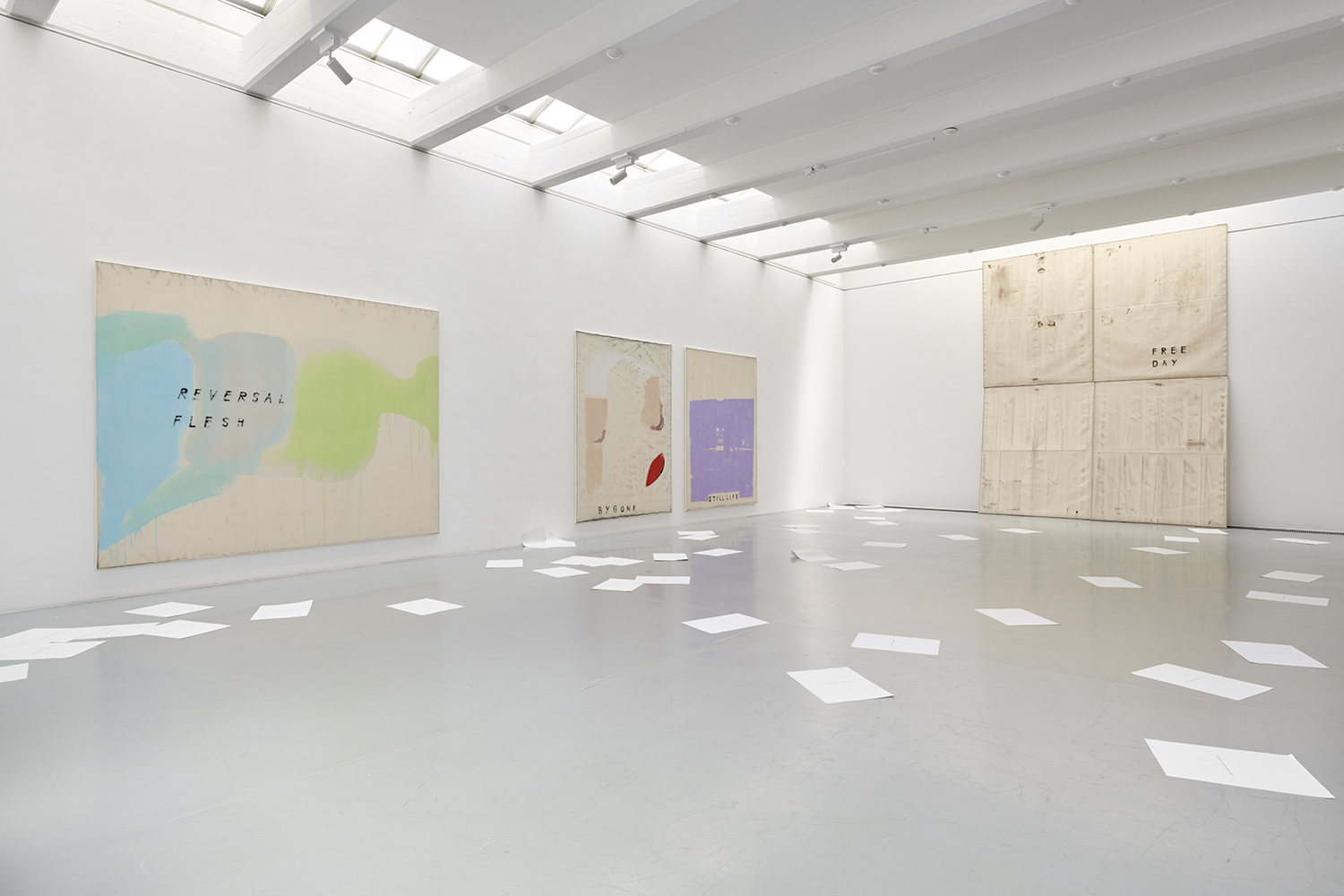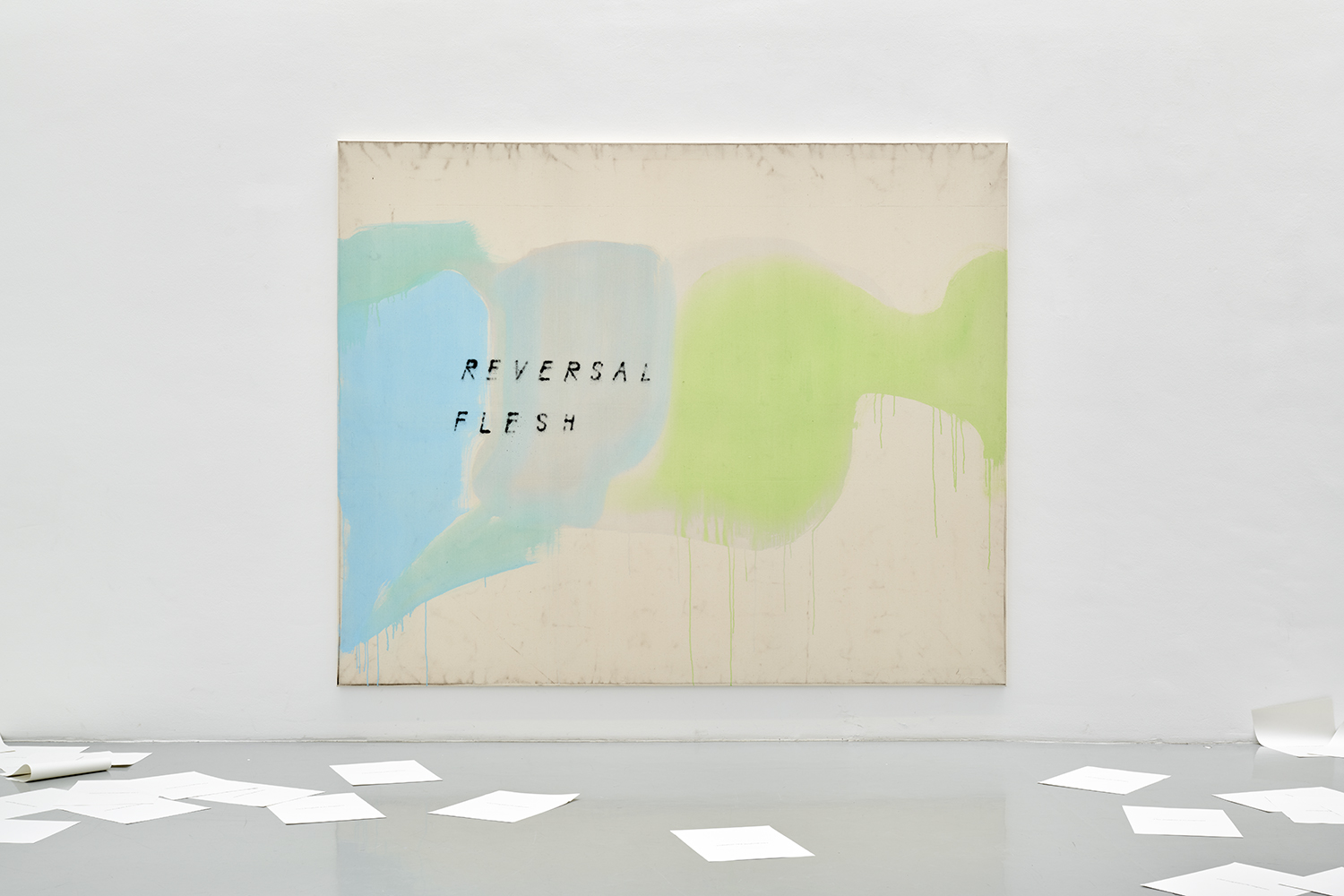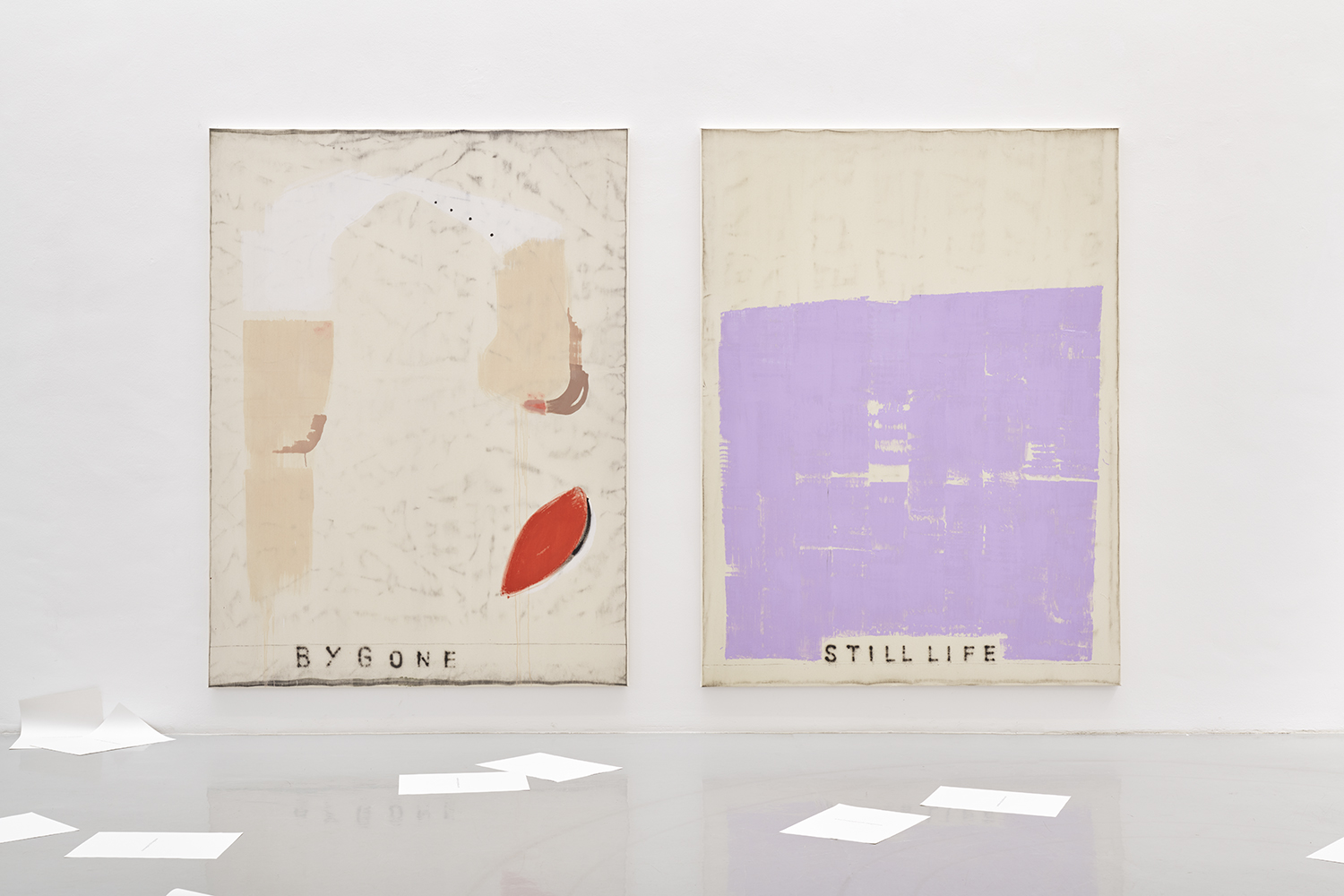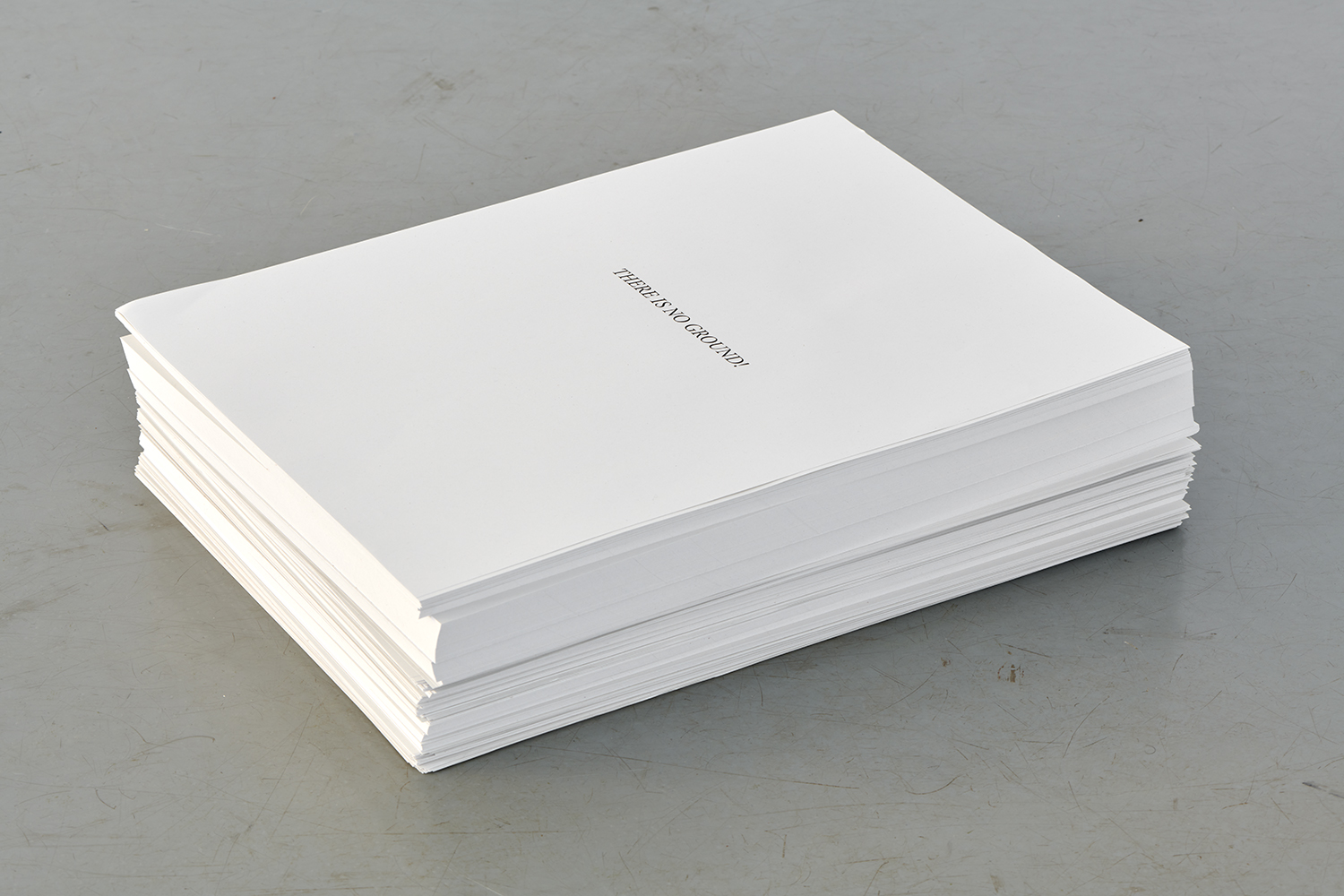FABIAN HERKENHOENER – Notes on a post-order of things
May 28, 2020 – June 27, 2020
3D Tour
FABIAN HERKENHOENER
Notes on a post-order of things
‘Was also ist der Organismus in der Welt, wenn nicht der unbedachte Flug eines Möglichen in das Herz des Unmöglichen, das ihn umgibt’
(George Bataille, Der Übervölkerte Planet, aus: Das Unfertige System des Nichtwissens)
‘Ich nähere mich diesen Leinwänden wie Notizen, halte sie in einem skizzenhaften und unvollständigem Zustand. Sie geben einer rudimentären Erscheinung der Dinge Form, und eine Struktur, die Gedankenprozesse markiert oder aufzeichnet.
Ich habe mit dieser Reihe von Bildern letztes Jahr begonnen, damals als eine Untersuchung des von der Norm Abweichenden, von Grenzerfahrungen und -Überschreitungen, ein anthropologischer Ansatz zu einer aus den Fugen geratenen Welt. Ein imaginatives Zu-Ende-Denken der Dinge als fiktive Repräsentation einer Anders-, Nach- oder Vorzeitlichkeit.
Mittlerweile ist die affirmative Handlung der poetischen Imagination ein Mittel zum Erlangen von Resilienz im Angesicht der realen Umstände geworden. Ich suche nach einer Möglichkeit bestimmte Ideen und Denkweisen zu überwinden, das Ersticken des Denkens in der alltäglichen Semantik einer konventionalistischen Klassifizierung. Ich denke solange Poesie möglich ist – als das Sehnen nach dem Unmöglichen – kann eine Art von Hoffnung möglich sein. Ich sehe Kunst als ein Mittel der Realität, in dem sie über sich selbst bewusst wird.’
Fabian Herkenhoener, Mai 2020
Die keiner verläßlichen Struktur mehr zugängliche Realitätserfahrung einer Zeit, die wir momentan als „Krise“ durchleben und die auch als Verlust unserer als beständig angenommenen Wirklichkeit gespürt wird, hebt hervor, was vorher unter dem Schleier der Gewohnheiten längst da war. Krisenhaftes, Fragwürdiges und Unsicherheit, Fragilität an vielen Stellen der Gesellschaft und in der Natur, die Frage nach Wahrheit und Realität, nach unserer Existenz im Einzelnen sowie im Zusammenleben mit anderen, Brüche und Ambivalenzen ebenso wie Leere oder Isolation – diese Fragen sind nicht neu, sondern lediglich in der aktuellen Situation sichtbar hervorgetreten, so dass Schwachstellen überdeutlich geworden sind. Die Bilder von Fabian Herkenhoener lesen sich in diesem Zusammenhang wie nachdenkliche, bisweilen ironische Bemerkungen zu diesem Zustand.
Die Titel und sprachlichen Notizen der Werke tauchen einerseits wie beiläufig und andererseits mit körperhafter Präsenz auf den Bildern auf, womit sie eine weitere Bedeutungsebene auffächern. Sie durchbrechen die malerische Offenheit sowohl durch die ironische Komponente, die sie irritierend hinzufügen, als auch durch ihre materielle Existenz, die einen fast störrischen Gegensatz zu der Offenheit der Bildes und analog dazu zu der Auflösung der Objekthaftigkeit von Bildern und Sprache in der zeitgenössischen digitalisierten Wirklichkeit aufzubieten scheint. Sie sind eindeutig da, dinghaft und in greifbarem Widerspruch zu der Leerstelle, die sie sprachlich kommentieren. Inhaltlich erinnern sie mit ihrer ironischen Verweigerungshaltung gegenüber herrschenden Zuständen bisweilen an avantgardistische Wortexperimente der Dadaisten, die auch in der Fluxus Bewegung wieder auftauchen, in denen Sprache als Zeichen eingesetzt wird, um eine jenseits semantischer Bedeutungen und narrativer Logiken liegende Ebene der Wahrnehmung als Kommunikationsmöglichkeit einzusetzen. Es ist eine Wirklichkeitswahrnehmung, die, analog zu den Forderungen der futuristischen Literatur, einer „Vision von Welt“ entspricht, in der freie Assoziationen eine Poetik der Gegenwart konstruieren. Wobei Fabian Herkenhoener die Sprache allerdings als Medium für eine alternative Wirklichkeitserfahrung jenseits der Alltagsbegebenheiten dient. Der Künstler selbst nennt es die anthropologische Bestandsaufnahme einer aus den Angeln gehobenen Welt. Die Sprache nimmt den „vanishing point“ der Poesie auf – den Moment, in dem sie ins Unbestimmte ausweicht, dahin, wo eine Befreiung von der Bestimmung eine Öffnung ins Universelle bedeutet, indem die Wirklichkeit durchlässig und offen für das Unmögliche wird und nur gespürt oder erahnt werden kann. Es ist die Möglichkeit, die Dinge in ihrer Nicht-Greifbarkeit zu erfassen und damit eine Alternative zur Leere.
Ann-Katrin Günzel, Mai 2020
FABIAN HERKENHOENER
Notes on a post-order of things
‘What therefore is the organism in the world, if not the unconsidered flight of a possible into the heart of the impossible that surrounds it?‘
(George Bataille, The Congested Planet, from: The Unfinished System of Nonknowledge)
‘I approach these canvases as notes, keeping them sketch-like and incomplete. They give form to a state of the rudimentary appearances of things and a structure that marks thought processes.
I started this line of paintings last year, back then as a survey on what deviates from the norm, of border experiences and border transgressions, an anthropological approach to a world gone off rail. An imaginative thinking of things to its end; as a fictional representation of an alternative, post- or pre-temporaneity.
Now, the affirmative action of the poetic imagination has become a means of achieving resilience towards real circumstances. I am looking for a way to overcome certain ideas and ways of thinking that tend to suffocate in a type of everyday semantics of conventionalist classification. I think that as long as poetry is possible – as the longing for the impossible – a kind of hope can be possible. I see art as a means of reality to gain consciousness about itself.’
Fabian Herkenhoener, May 2020
The reality experience (that no longer lends itself to a reliable structure) of a time that we are currently experiencing as a “crisis” – and which is also felt as a loss of a reality that we had taken for granted – highlights what has long been veiled by habit. Crises, dubiousness and uncertainty; fragility in many parts of society and in nature; the search for truth and reality, for our existence as individuals and together with others; ruptures and ambivalences and emptiness or isolation – these things are not new but have merely come more to the fore in the current situation, laying bare all weaknesses. In this context, Fabian Herkenhoener’s pictures read like reflective, often ironic comments on this state of affairs.
The titles and linguistic notes of the works manifest themselves on the one hand as if in passing and, on the other hand, with physical presence on the pictures, opening up a whole new level of meaning. They penetrate the openness of the painting through ironic components that they add disconcertingly, and through their material existence, which appears to summon up an almost stubborn contrast to the openness of the picture and, by the same token, to the resolution of the object status of pictures and language in the contemporary digitised reality. They are clearly there, tangible and in palpable contrast to the void upon which they are commenting through the medium of words. With their ironic rejectionist attitude towards prevailing circumstances, they often call to mind the avant-garde word experiments of the Dadaists, which also crop up again in the Fluxus movement, in which language is used as a symbol for communicating on a level of perception that goes beyond semantic meanings and narrative logic. It is a perception of reality that, much like the demands of futuristic literature, corresponds to a “vision of the world” in which free associations come together to form a poetry of the present. Meanwhile, Fabian Herkenhoener uses language as a medium for an alternative experience of reality, far removed from everyday life. The artist himself calls it anthropological stocktaking of an unhinged world. The language takes on the vanishing point of poetry – the moment in which it veers into unchartered waters, where being liberated from a specific purpose means opening up to the universal – here, reality becomes penetrable and open for the impossible and can only be sensed or guessed. It is a way of grasping things in their non-tangibility, thus offering an alternative to emptiness.
Ann-Katrin Günzel, May 2020

